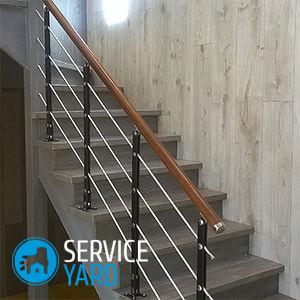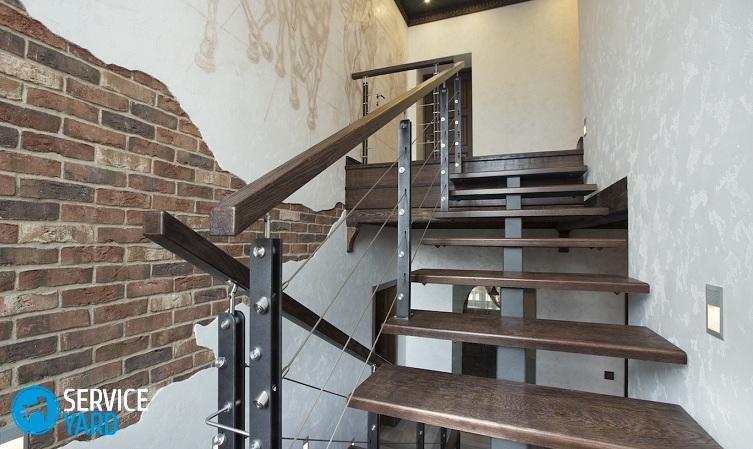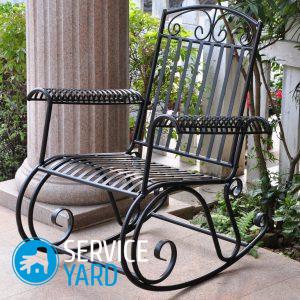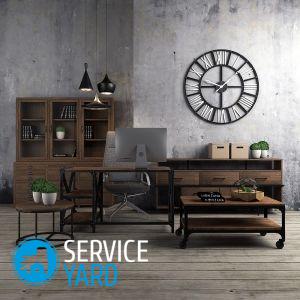Do-it-yourself ladder from a profile pipe - drawings

Metal stairs are today enviable popularity, they are created by prefabricated or welded method. They can be stationary and attached, have a screw, direct or mobile design. When it becomes necessary to create a durable and reliable product, metal is always used. But, despite the strength of this material, when creating and assembling a staircase, it should be noted that too large dimensions can damage the structure. If you use too thick metal, the stairs will turn out to be too heavy and too bulky with huge angles. In this material we will tell in detail how to create a ladder from a profile pipe with our own hands. Drawings and all the necessary recommendations will also be given below, so you can handle this work without any problems.
to contents ↑Why is it better to make stairs from a profile pipe?
Metal structures began to be made for a long time, so this idea can not be called new. In the process of choosing such products, maximum attention is paid to the channel and the metal corner.
For years, metal stairs have been assembled according to the following principle:
- Two channels were installed parallel to each other.
- Then the contours between them were welded by means of a metal corner.
- Then, embossed structures or wooden steps were attached.
Based on many years of experience, it can be argued that the use of a metal corner is very short-lived, because under the influence of large loads it is deformed. This material was found a worthy replacement - a metal profile.
Important! For the construction of stairs, it is better to use a square metal pipe with a section of 40 to 60. When using a pipe with a smaller section, the result is identical to the version using a corner.
Any ladder with a self-made profile pipe, made in accordance with the recommendations of professionals, has the following advantages:
- From this profile, you can make not only a stationary, but also a spiral or access ladder. In addition, you can make turns at different angles.
- You can combine any other materials with it, for example, plastic, wood or glass. The metal combined with these materials allows you to make the product in any color, in the most unique performance.
- You can do with the use of only one profile, because it can always be painted in the desired shade. Silver and gold, saturated black with metallic are in special demand.
- Such stairs are incredibly beautiful, durable, able to last for more than a dozen years.
- Even the frame of the most complex design can be assembled independently, the main thing is to correctly make all the blanks.
- Installation of the finished structure can be carried out during construction or repair work.
- The cost of such products is low, affordable to any person.
- To assemble such a ladder, it is enough to have the most ordinary welding machine.
Features of working with a metal profile
To make a reliable ladder from a pipe with your own hands, be sure to familiarize yourself with the main characteristics of this material before starting work - this will help you to avoid difficulties and various troubles.
Rules for working with profile pipes when building a ladder:
- Since the material itself is heavy, it is better not to burden the structure additionally. On the contrary - think in advance how it can be facilitated, for example, install wooden steps from birch plywood or some kind of light wood.
- No matter where you plan to install the stairs, the iron must be treated with anti-corrosion agents and painted. Only the street version will have to be updated a little more often.
- To install, you will need skills with a welding machine. If you don’t have one, then it’s better to seek the help of a specialist or fasten using bolts, but this option is quite risky.
Preparatory stage
All such work begins with preliminary calculations and drawing up drawings. They allow you to accurately determine the required amount of material. And it does not matter which one will be created - a stationary or an access ladder from a profile pipe with your own hands, you will certainly need drawings.
In order not to be distracted and work comfortably, prepare the necessary tool beforehand:
- Welding machine and electrodes.
- Hammer drill with a set of drills.
- Grinder with circles for working with metal.
- Hammer.
At this stage, marking should also be done, the material should be cut according to the given dimensions.
to contents ↑Important! So that the assembly of the stairs does not become a real puzzle for you, number all the details during the cutting process.
Self-assembly of stairs
Now we will describe in detail how the staircase is assembled from a square pipe with our own hands. At the assembly stage, it is recommended to pay maximum attention to the supporting beams, because it is they that bear the greatest load.
Build according to this scheme:
- Weld the contour of the pipe so that you get a rectangle for mounting the steps. Even the circuit itself can be used as steps, especially for external stairs - only in this case they still have rods welded to them.
- Use the profile pipe 10 by 10 cm or the channel 10 cm to create the foundation of the structure. The pipe in this case is preferable, since during operation it gives minimal vibration. If you still prefer the channel, then fixing on the floor will help to fix the situation.
- Cut the pipe so that the sections on the parts fit snugly against the support, the second end should coincide with the upper support. Weld the fixing platforms to the upper and lower edges. If you do everything correctly, then your upper platform will fit snugly to the base of the floor, and the lower one to the floor.
- Between the supports weld special support frames, while observing the necessary step.
- Lastly, that is, after painting the stairs, install the railing and decor elements.
to contents ↑Important! Often, a gap is left between the wall and the staircase, so that later you can glue the wallpaper or paint the wall. In such situations, structures are additionally equipped with crutches, they are simply driven into the wall, fixed under the inner main pipe and welded to the structure itself. With this technology, a ladder is also assembled from a round pipe with its own hands.
Ladder assembly
Such products have a simple design. The staircase forms an emphasis with bowstrings in the floor and wall surface. In this case, the structure has a slope of 60-75 degrees. The steps are placed at the same distance from each other, on average 35 cm.
Important! To exclude sliding, rubber or plastic tips are put on supports.
To work, you need such materials:
- A round or rectangular profile 2 m long. For steps, a rectangular profile 1.65 m long. Dural pipes 2 mm thick.
- Bolts, nuts, washers.
- Welding machine, electrodes.
- Rubber or plastic protective tips for supports.
Make a ladder according to the following instructions:
- First of all, make blanks for stairs. Cut the 1.65-meter-long profile into five identical pieces, 33 cm long.
- On profiles 2 m long, make a marking, put marks every 35 cm.
- If you decided to fix the steps with bolts, then create clamps from thin metal strips. Bend them symmetrically in the shape of the pipe, drill gaps in the pipes 2 m apart, departing from the edge of 1.5 cm. If you prefer welding, skip this step.
- Attach the steps, put rubber or plastic tips on the base of the legs.
Stock footage
You see how easy it is to create ladders from metal with your own hands from a profile pipe. But do not forget that carrying out such manipulations, seemingly uncomplicated at first glance, is a very responsible work that requires caution, attentiveness, and literacy. The assembly process, acquired material and a set of tools only confirm the availability of such structures financially.






